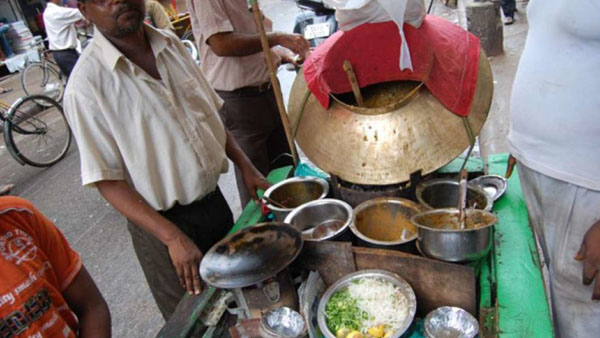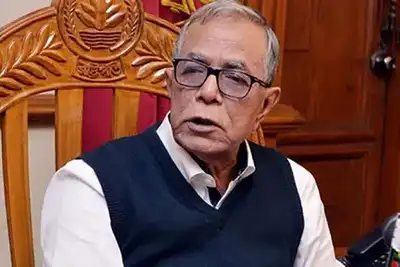By Dipak Kurmi
World Food Safety Day, observed annually on June 7, serves as a global reminder of the critical role that safe food plays in public health and economic stability. In 2025, the theme “Food Safety: Science in Action” resonates deeply with India’s ongoing journey to transform its food safety framework. From its early days of tackling adulteration to adopting a sophisticated, science-based approach, India has made remarkable strides. Yet, as the nation aligns its standards with global best practices, persistent challenges—such as the lack of localized research, ineffective risk communication, and outdated regulations—highlight the need for continued progress. This journey, marked by ambition and complexity, underscores India’s commitment to ensuring safe food for its billion-plus population while navigating the delicate balance between scientific rigor and public trust.
India’s food safety story began with the Prevention of Food Adulteration (PFA) Act of 1954, a legislative effort that framed food safety as a binary issue: food was either adulterated or not. This approach, while groundbreaking for its time, was overly simplistic, treating all contaminants—whether intentional adulterants, pesticide residues, veterinary drug residues, food additives, or naturally occurring toxins—as equal threats, regardless of their quantity or context. The PFA Act lacked the nuance required to address the complexities of modern food systems, where safety depends on understanding exposure levels and risk profiles. It was a reactive framework, ill-equipped to handle the evolving demands of a rapidly growing nation with diverse dietary patterns and agricultural practices.
The turning point came with the Food Safety and Standards Act of 2006, which birthed the Food Safety and Standards Authority of India (FSSAI). This landmark legislation marked a paradigm shift, moving India toward a risk-based, science-driven approach inspired by the Codex Alimentarius Commission, a global authority on food standards. The FSSAI introduced critical concepts such as maximum residue limits (MRLs) for pesticides, acceptable daily intake (ADI) values for food additives, and specific standards for contaminants and veterinary drug residues. By 2020, India’s food safety standards were nearly on par with those of advanced economies, a testament to the FSSAI’s ambitious efforts to modernize the system. This alignment enabled safer food production and trade, bolstering India’s position in the global market while protecting consumers at home.
However, this rapid progress revealed significant gaps, particularly in the realm of risk assessment. A fundamental challenge is the absence of India-specific toxicological studies. Most safety standards, including MRLs and ADIs, rely on international data, which often fail to account for India’s unique dietary habits, agricultural practices, and environmental conditions. For instance, Indian diets are heavily plant-based, with staples like rice, pulses, and vegetables forming the core of daily consumption, unlike the meat- and dairy-heavy diets often studied in Western research. Without localized data, these standards risk being misaligned with actual exposure levels. The lack of a total diet study (TDS), which evaluates cumulative exposure to contaminants across an entire diet, further weakens India’s risk assessment framework. Fragmented data from sporadic surveys cannot provide the comprehensive insights needed to set precise, evidence-based standards. This gap undermines the scientific foundation of India’s food safety system, leaving regulators to make decisions based on incomplete or borrowed information.
Risk communication poses another significant hurdle. Technical terms like MRLs and ADIs, expressed in minute quantities such as parts per million (ppm) or parts per billion (ppb), are often incomprehensible to the average consumer. This complexity can lead to confusion or mistrust, particularly when standards are revised. A notable example is the revision of pesticide MRLs from a highly restrictive 0.01 mg/kg to a more practical 0.1 mg/kg. While this change aligned with global standards and scientific evidence, it sparked public concern, with many perceiving it as a reduction in safety rather than a refinement based on risk assessment. Effective communication—translating complex science into clear, relatable messages—is essential to bridge this gap and foster public confidence.
Legacy issues further complicate India’s food safety landscape, with the regulation of monosodium glutamate (MSG) serving as a striking example. MSG, a flavor enhancer, has been deemed safe by the Joint Expert Committee on Food Additives (JECFA) since 1971, with an “ADI not specified” status granted in 1987, reflecting its safety across all consumption levels. Globally, this consensus is widely accepted, and most countries have removed outdated restrictions on MSG. In India, however, the journey has been slower. Initially permitted only in meat products, MSG is now allowed in all foods but carries a mandatory warning label stating it is unsafe for infants. This precaution is misleading, as glutamates—chemically identical to MSG—are naturally abundant in foods like tomatoes, mushrooms, garlic, and even breast milk. The warning perpetuates the misconception that MSG is inherently harmful, fueling consumer fear and confusion. This disconnect between global scientific consensus and India’s regulatory approach highlights a broader challenge: the persistence of outdated regulations that clash with current evidence. Such legacy issues not only undermine public trust but also hinder India’s alignment with international standards.
To address these challenges, India must invest in a more robust, science-driven food safety ecosystem. Conducting localized toxicological studies and a comprehensive TDS is critical to understanding the unique risks faced by Indian consumers. These studies would provide data tailored to India’s dietary diversity, agricultural practices, and environmental factors, enabling more accurate MRLs and ADIs. Strengthening risk communication is equally vital. Simplifying scientific terminology and replacing misleading labels, such as those for MSG, with clear, evidence-based information can demystify food safety for the public. For example, campaigns could highlight that MSG is as safe as natural glutamates, dispelling myths and fostering informed choices.
Building the capacity of risk assessors is another priority. Continuous training ensures that regulators stay abreast of the latest scientific advancements, enabling sound decision-making. Regular reviews of standards, aligned with new research and global best practices, are essential to keep India’s framework dynamic and relevant. Transparency in these updates—explaining why and how standards evolve—can prevent public misinterpretation. Finally, engaging stakeholders, including industry, consumers, and advocacy groups, is key to building trust. Open dialogue can address concerns, clarify misconceptions, and ensure that regulatory decisions are perceived as evidence-based rather than arbitrary.
India’s food safety journey, as Pawan Agarwal, former CEO of the FSSAI and current CEO of the Food Future Foundation, has noted, reflects a commitment to protecting public health while navigating complex challenges. The FSSAI has laid a strong foundation, but sustaining progress requires unwavering dedication to science, transparency, and education. Regulatory decisions must prioritize evidence over fear, ensuring that standards evolve in step with global understanding. By investing in localized research, improving communication, and fostering collaboration, India can strengthen its food safety system, empowering consumers to make informed choices without undue worry. As the nation reflects on World Food Safety Day 2025, it stands at a pivotal moment, poised to bridge the gaps in its journey and embrace a future where science and trust go hand in hand.
(the writer can be reached at dipakkurmiglpltd@gmail.com)




